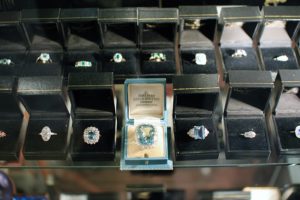 When people want to sell items of value, they often turn to consignment stores to do the job for them. Although certain online platforms offer opportunities to sell just about anything these days, many people don’t want to deal with the hassle and uncertainty of determining fair pricing, fielding bids, and dealing with strangers. They’d rather have a professional make the transaction on their behalf (for a small fee).
When people want to sell items of value, they often turn to consignment stores to do the job for them. Although certain online platforms offer opportunities to sell just about anything these days, many people don’t want to deal with the hassle and uncertainty of determining fair pricing, fielding bids, and dealing with strangers. They’d rather have a professional make the transaction on their behalf (for a small fee).
The difficulty with managing a successful consignment store, however, is creating an atmosphere conducive to selling. It’s not unusual for consignment stores to be crowded by an overwhelming amount of merchandise, or to have such a wide range of disparate items that it’s difficult for customers to understand what they’re looking at, much less find something they’re looking for.
What can you do as a consignment store owner to create a high-end, boutique experience that draws shoppers in, facilitates sales, and encourages repeat business (not only from consumers, but sellers, as well)? Here are a few tips to create the cohesive and organized sales space that helps you reach your goals.
Create a Merchandising Plan
When you operate a consignment store, it’s easy to get overwhelmed with a diverse range of inventory, but if you’re selling everything from haute couture apparel, to jewelry and handbags, to heirloom furniture, to rare books and other collectibles, for example, you’re going to end up confusing customers. In addition, it could be very difficult to successfully organize your retail space.
From the outset, you need to create clear parameters as to the type of items you’ll sell on consignment, and ideally, choose compatible items. If you’re going to sell clothing, then adding accessories like shoes, handbags, and even jewelry makes sense. Selling heirloom furniture alongside rugs, artwork, and even lighting is logical. Just make a solid plan as to what you plan on selling so you can organize your retail space accordingly.
Select Appropriate Display Hardware
Once you have a clear idea of what you’re going to sell, you can use that knowledge to choose the foundational pieces needed to display your wares. If you’re selling jewelry, you might want jeweler’s cases to protect valuable pieces, as well as show their brilliance with built-in lighting. Or you could use countertop racks or mannequin heads to create attractive displays at the POS.
If you’re selling clothing, you’ll need appropriate racks, shelving, and wall mounts, from single racks, to versatile rolling racks, to gondolas or other shelving, to slatwall or grid walls, just for example. Smaller items like scarves or hats may require bins or specialty items like a hat display rack. For this type of store, you’d also need plenty of mirrors.
In Conclusion
The point is, you need to make sure you have the right pieces in place to properly display merchandise. When you know exactly what you’re planning to sell and you have the right displays in place, you can create a cohesive and appealing space that provides the best opportunities to impress customers and make sales.
If you are interested in purchasing Retail Store displays and accessories for your retail store, shop our website, Specialty Store Services. We have everything you need to be a profitable retailer. If you have a question that you would like answered immediately, you can Live Chat, or phone us at 800-999-0771.
